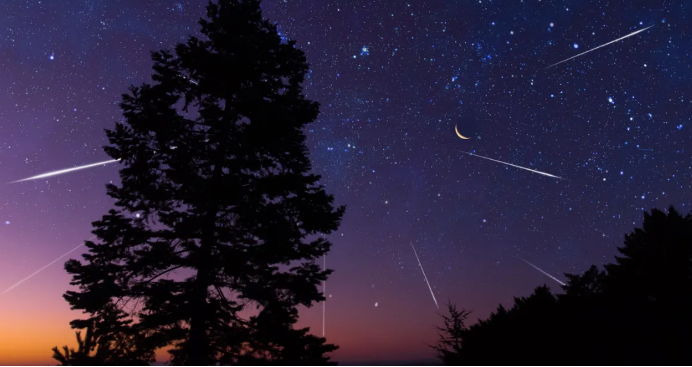
Get ready for a dazzling sky show! The Lyrid meteor (流星) shower, one of nature’s oldest light displays, will light up the Northern Hemisphere this April. In China, the best time to watch is from the evening of April 22 to the early hours of April 23. This year, Beijing stargazers have perfect conditions: the moon will be a thin crescent (only 27% bright) and won’t rise until 3 AM on April 23, ensuring dark skies for better visibility!
Meteor showers happen when Earth passes through trails of dust left by comets or asteroids. These tiny rocks, some as small as grains of sand, burn up in Earth’s atmosphere, creating bright streaks called “shooting stars”. The Lyrids come from Comet Thatcher, discovered in 1861. Chinese astronomers first recorded this meteor shower over 2,700 years ago! What you see isn’t the rock itself but the glowing hot air around it — some trails can be 10 miles wide!
Active from April 14 to 30, the Lyrids peak around April 22. For most areas in China, the best viewing starts after 10 PM when the meteor “radiant point” (near the bright star Vega) rises higher in the sky. You don’t need a telescope — just your eyes! Follow these tips:
1) Escape city lights: Head to countryside areas, parks, or mountains where skies are darker.
2) Be patient: Let your eyes adjust to darkness for 20 minutes, and avoid phone screens.
3) Dress warmly: Nights in April can still be chilly.
4) Look everywhere: Meteors can appear anywhere in the sky, not just near the Lyra constellation (星座).
While the Lyrids aren’t the busiest shower (about 18 meteors per hour), they often produce bright fireballs. Every 60 years, they surprise us with up to 100 meteors hourly! The next big show is predicted for 2042. Want to capture the moments? Use a camera on a tripod with manual settings, aim it at open sky, and wait — meteors are fast but unforgettable!
Mark your calendar, find a dark spot, and look up — you might just catch a piece of cosmic magic!
奇速英语 原创编写 版权所有 侵权必究! 每日更新 个性化阅读 英语飙升!


 更多优质学习内容
更多优质学习内容

